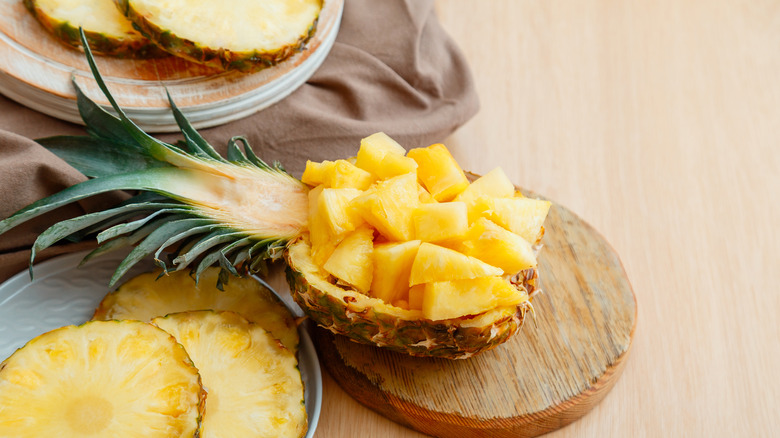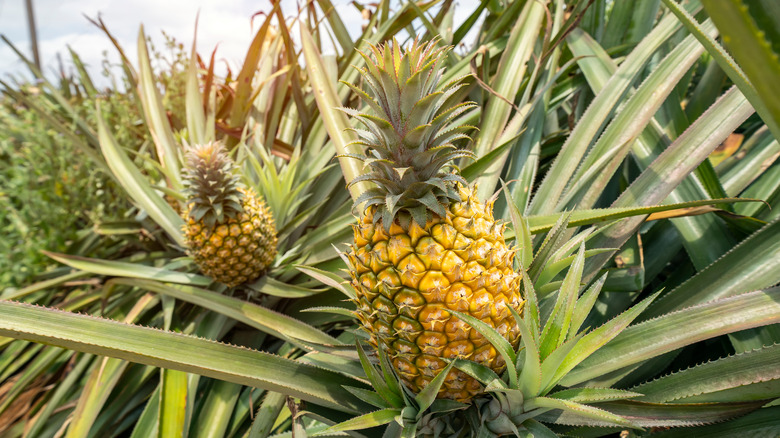Most Of The World's Pineapple Comes From This Country
Pineapples are grown across the world. With pineapples growing on the largest of the Azores since 1850, as stated by HortiDaily, the traditionally tropical fruit even grows in Europe. Those, though, are primarily for local consumption. The majority of European pineapples, meanwhile, come from the country that produces the single largest amount of the fruit.
Stateside, the pineapple is maintaining its popularity. In 2017, First We Feast crowned the pineapple as the best of all fruits, claiming that anyone who has not eaten an entire pineapple cannot possibly be living their best life. Similarly, even though McKeany-Flavell called 2019 and 2020 years of lower demand for pineapple products, that lower demand occurred after 20 years of near-uninterrupted growth of people eating pineapple products. In 1997, people ate 2 pounds of pineapple per capita. In 2017, the amount had already exceeded 7 pounds.
Such a large amount of pineapple consumption needs an equally large amount of production. And yet, Chestnut Hill Farms claims 90% of pineapples come from one country.
The vast majority of pineapples come from Costa Rica
According to Banana Link, 75% of all pineapples that arrive in Europe are grown in Costa Rica, which contributed to the country's $1.22 billion export fruit market in 2015. Atlas Big pegs pineapple production at 3,328,100 tons annually. That is over a half million more tons than the second largest producer, the Philippines with its 2.7 million tons.
Chestnut Hill Farms explains the reason over 90% of pineapples consumed in the United States come from Costa Rica is that the fruit is always in season there. Costa Rica alternates between a rainy season and a dry season but even the dry season is humid enough to facilitate pineapple growing. Moreover, the plantations that grow pineapples are located in valleys to maximize the use of the rainfall during the rainy season. In fact, the Northern Hemisphere's autumn coincides with the highest period of rainfall and then transition from the rainy season to the dry, which means the tropical fruit is ready just in time for the long dark winter.

